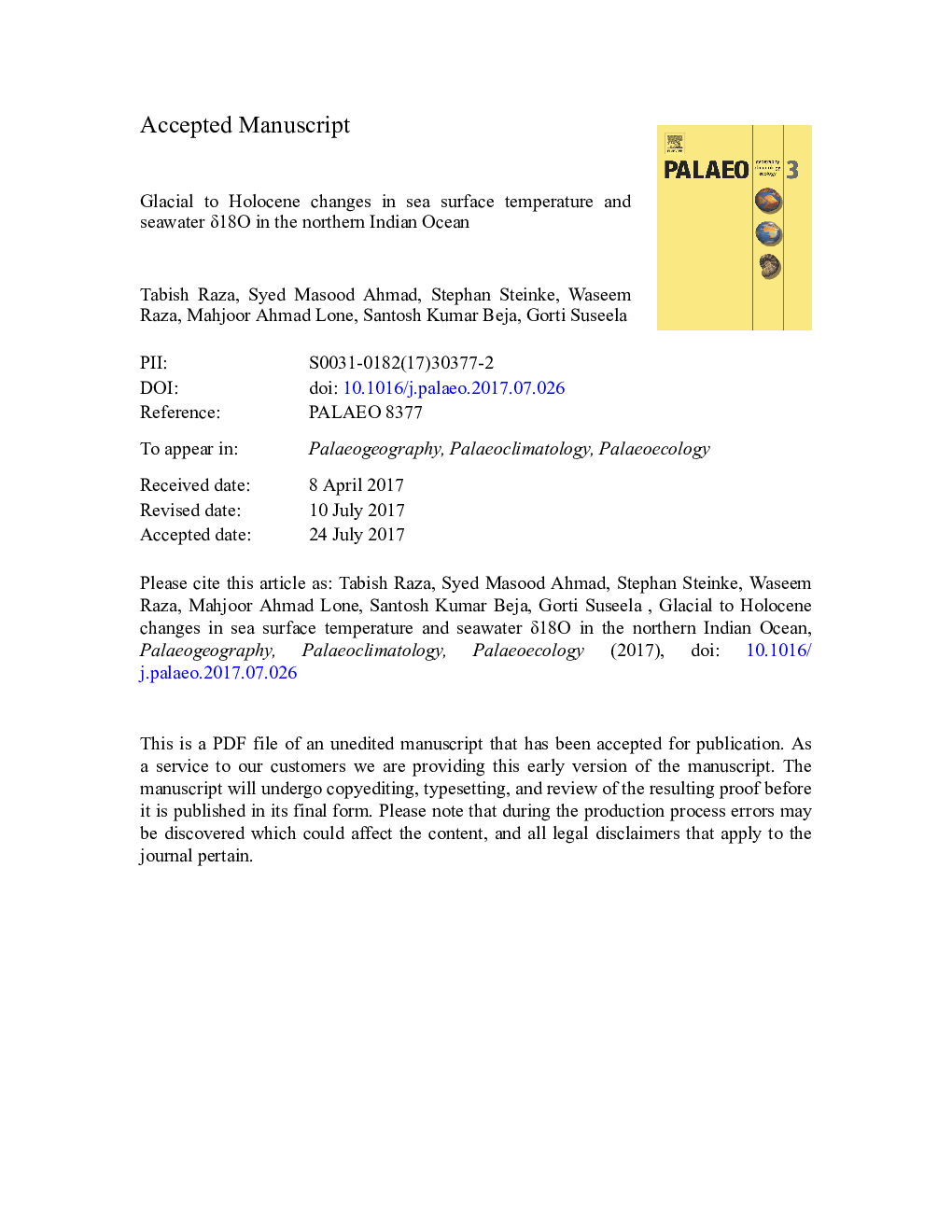| Article ID | Journal | Published Year | Pages | File Type |
|---|---|---|---|---|
| 8868710 | Palaeogeography, Palaeoclimatology, Palaeoecology | 2017 | 38 Pages |
Abstract
Sea surface temperature (SST) and seawater δ18Osw records were generated from sediment cores located in the southern Bay of Bengal (SBOB) and the northeastern Arabian Sea (NEAS) to understand glacial to Holocene changes in the hydrography of these regions. This was accomplished through the use of paired δ18O and Mg/Ca measurements in planktic foraminifera (Globigerinoides ruber) from two sediment cores; SK157-14 in the SBOB (lat. 5°11â²N; long. 90°05â²E; water-depth 3306 m) and SK148-21 in the NEAS (lat. 21°29â²N, long. 67°01â²E; water-depth 1900 m). The results suggest significant changes in SST and δ18Osw since last glacial period. The glacial SSTs in the SBOB and the NEAS were lower by ~ 2-2.5 °C relative to the Holocene. The deglacial period in both cores is characterized by significant variations in SSTs and seawater δ18Osw. The Dansgaard-Oeschger (DO) cycles and Heinrich events are strongly expressed in SST and δ18Osw records of the SBOB core. These records support a strong control of atmospheric-oceanic changes in the northern high latitude on thermal state of the SBOB. The SST time series in both these regions indicates a sudden and abrupt increase in temperature at the end of last glacial maximum. The SST time series in the NEAS core SK 148-21 reveals an intensification of the northeast monsoon during the last glacial maximum.
Related Topics
Physical Sciences and Engineering
Earth and Planetary Sciences
Earth-Surface Processes
Authors
Tabish Raza, Syed Masood Ahmad, Stephan Steinke, Waseem Raza, Mahjoor Ahmad Lone, Santosh Kumar Beja, Gorti Suseela,
